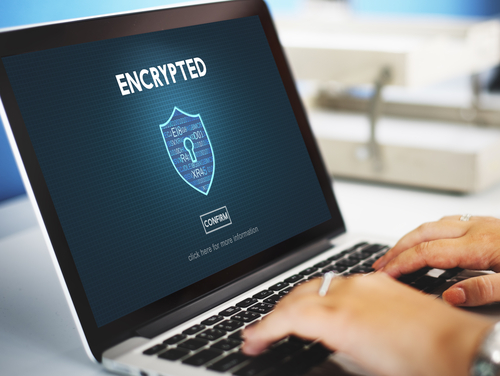Every time you open your inbox, you’re greeted with at least 10 to 20 unwanted emails, maybe more. It may seem like an endless chore to sort through all these unsolicited emails to find your legitimate ones. What can you do to stop getting spam emails?
There are several ways to stop spam emails. In this article, we will explain the best ways to curtail spam emails and regain control of your inbox.
![]()
What Are Spam Emails and Why Do You Get Them?
Spam email, which got its name on message boards in the early 1990s, is a phrase used to describe unwanted emails. Most spam is sent by companies wanting you to buy products or subscribe to services. Since emails are low-cost advertisements, companies can use this form of communication to market goods and increase sales.
Businesses send these emails out in large quantities using an email list. You may notice that everywhere you shop, they ask for your email address. Even many websites won’t let you subscribe to their content without an email address.
When you supply your email address, you add yourself to these companies’ lists and end up with multiple unsolicited emails in your inbox. But spam emails are not only annoying, but they can also threaten your cybersecurity.
As of January 16, 2023, the United States ranked highest in the number of spam emails sent per day at around 8 billion emails. Advertising only makes up 36% of these spam emails. So, many of the remaining daily spam emails are phishing scams.
Common email phishing scams include the following:
- Antivirus warnings
- Email spoofing (a scammer impersonating a trusted brand, company, or person)
- Sweepstakes winner
- Money scams
Each of these fraudulent emails is meant to draw in recipients to act. You should always be cautious about clicking on any links or responding to any personal questions sent to you via email.
10 Ways to Stop Getting Spam Emails
Most email providers have a spam filter built into their service, but these filters alone are usually not enough to keep unsolicited messages from your inbox. The following methods will help you to better protect your email account against unwanted spam.
#1 Delete Spam Emails
One of the most obvious ways to get rid of spam emails is to manually delete them. Many that are sent by legitimate companies will be easy to identify. You can simply select the email without opening it and immediately send it to a trash or junk email folder.
If you see an email from an unknown sender or it looks suspicious in any way, delete it immediately. When you open spam messages sent by scammers, they may have attached software that detects whether you’ve opened the message or not. If you open it, it may promote more unwanted messages.
Additionally, opening unsolicited emails may also compromise your account. Some malware programs can be attached to links and attachments in an email.
#2 Report Spam Emails
Even if you delete spam emails manually, you may still receive more from the same sender. So, to keep spam senders from bombarding your email account, you can report them. This allows your email client to recognize email addresses that are sending out spam and to block those addresses as part of their built-in filter.
Here is how to report spam to Gmail:
- Open Gmail to access your inbox.
- Identify the email you wish to report. On the left side of the email, click the box. Be careful not to open the email.
- Navigate to the top of the inbox where the mail toolbar is located. There should be a stop sign symbol with an exclamation point inside it. Click that to report the email.
Here is how to report spam mail on Apple Mail:
- Open your Apple Mail.
- Click the suspicious email and click the icon that looks like a square with an X on it. This is the Junk Mail icon.
You can report spam on Mac and iOS devices alike, but the steps may look a little different for each.
Here is how to report spam mail on Microsoft Outlook:
- Go to your Outlook inbox.
- Right-click over the email you want to report.
- Select “Security Options.”
- Then, click “Mark as Junk.”
Here is how to report spam mail on Yahoo Mail:
- Go to your Yahoo Mail inbox.
- Select the box to the left of the spam email you wish to report.
- Go to the mailbox toolbar at the top-right and select the spam icon. It looks like a shield with an x inside it.
Reporting unwanted messages helps to train your inbox filter to better identify phishing emails.
#3 Block Spam Senders
Deleting spam emails will help to protect you from scams, phishing, and malware. Reporting spam emails will help train your spam filter, but some persistent spammers will continue to send you spam emails.
To keep the same spammers from continuing to invade your inbox, you can block them on your email service.
To block spam email addresses on Gmail:
- Check the box on the left side of the spam email.
- Click the 3 dots on the right side of the mailbox toolbar.
- Select the “Filter Messages Like These” drop-down menu.
- Choose “Create Filter.” Then, verify the email address. Select the box that says, “Delete it.” Then, confirm the new filter by selecting the “Create filter” gray box at the bottom to save the new filter.
To block spam email address on Apple Mail:
- Select the message from the sender you want to block on your Mail app.
- Click the arrow next to the sender’s name in the message’s header.
- On the drop-down menu, click “Block Contact.”
To block spam email on Outlook:
- Right-click the email whose sender you want to block.
- Select “Security Options” on the drop-down menu.
- Then, click “Block Sender.
To block spam email on Yahoo Mail:
- Check the box on the left side of the spam email whose sender you are blocking.
- Click the 3 dots on the top right mailbox toolbar.
- Select “Block senders” in the drop-down menu.
Blocking these senders will not completely stop spam emails, but it will stop them from sending their emails from these addresses.
#4 Forward Your Emails to An Alias
An email alias in an email address you use to give out when you don’t want your main inbox to fill up with unwanted mail. You can create email aliases on the same mail server that your main email account is hosted.
You can create multiple email aliases for one email account to create a system of filtering out your subscriptions and advertisements you don’t want to go to your main email address. Email aliases are meant for receiving emails, though. If you send an email through your email alias, it will be sent from your main email address.
You can even have all your emails from an alias forwarded to your main email. You can even set it up to automatically go to a junk or spam folder to help prevent phishing attacks and to keep you from ever receiving spam emails in the first place.
#5 Get a Third-Party Email Filter
If you want to crack down on spam emails, you can get a third-party spam filter to add another layer of security. You’ll want to make sure that your third-party spam filter is compatible with your email provider. If you use your email on a mobile device like an Android or iPhone, make sure that the filter will work with their applications.
Pairing a third-party filter with your email provider’s built-in filter will give you twice the protection against malware, phishing attacks, and unwanted messages.

#6 Unsubscribe From Mailing Lists
Another way to reduce the amount of spam in your inbox is to unsubscribe from marketing emails. Many stores you shop at ask for your email address during checkout. So, you’ve racked up many emails from legitimate companies, such as Amazon or Target.
Many times, you can go to your account with these companies and change your email settings to reduce how often you receive the newsletters or to discontinue them altogether. Emails also have an unsubscribe button, usually located at the button of the email.
Before clicking on these unsubscribe buttons, however, double, and triple-check that the email you have opened is from a legitimate source. Many phishing scams can pose as an unsubscribe button. Then, when you click it, they can attack you with malware or ask questions that get you to give up confidential information.
#7 Be Vigilant
One way you can help to increase your cybersecurity is by turning off “auto-load” on your email images. Many email providers turn this feature on manually. Once you turn “auto-load” off, pictures and other external content will not download once you open the email.
This will help you to protect yourself from any spyware or malware attached to these images. Another way to protect yourself from identity theft is to search the Dark Web for your email address and passwords. These are usually leaked during data breaches.
HaveIBeenPwned is a legitimate dark web scanner you can use to check to see if your personal data is floating around for anyone to steal. If your information is found, be sure to update your passwords. You will also want to learn how to spot the signs of a phishing email.
Grammatical errors in the subject line and body, requests for information, emails from unknown senders, and a message that urges you to click links or download attachments to complete an immediate action are all red flags of a suspicious email.
Phishers want to get hold of your financial information, such as credit card and bank account numbers, so be extra wary about sharing those details via email. If you suspect an email is a threat, report it, delete it, and avoid others like it. Don’t click on anything.
The malicious links could infect your computer or provide the scammer with more of your information. You can also go into your email host’s privacy settings to see what other privacy precautions you can enable to further protect your email account.
#8 Stop Opening Spam Emails
As mentioned previously, if you suspect an email may be spam, do not open it. The more you open spam emails, the more you get. Often, by opening these emails, you are verifying to the scammer that your account is active. They verify this by attaching tracking software to their email that notifies them when you have opened it.
It’s best to be on the cautious side. If an email looks suspicious, delete it. If an email looks suspicious, but there is a possibility it could be legitimate, contact the sender in a different way to verify they sent you the email in question
#9 Be Protective of Your Email Address
Stop giving out your email address. This is easier said than done. Everywhere you go someone is vying for your email address, but it is within your rights to refuse to disclose that information. If you cannot access a website or content without inputting your email address, this is where an alias or a burner email account comes in handy.
Also, be aware of all the other places you may share your email address without realizing it. Never post your main email address on social media where anyone can access it. If you have a personal website, remove your email address from the website or create a separate email account for that website.
#10 Start Fresh with a New, More Secure Email Account
If getting through the mountain of spam emails seems a daunting task or if you discover that your email account has been hacked, you may wish to start over with a new email address. Whether you’re searching for a new personal email hosting service or one for your business, you want to make sure you choose wisely.
You may even be ready to change email hosts so that you can get a more secure email address. Sekur has encrypted Swiss-hosted email, VPN, and instant messaging that can help you regain control of your inbox. Our easy migration tool will make it a breeze to transfer your existing data from any email.
With SekurMail you can send encrypted emails outside of Sekur’s network. Then, recipients can reply within our Sekur environment. You will be able to send attachments in unlimited sizes and monitor your email activity.
Our company is a 100% private platform that uses military-grade advanced encryption. We do not mine data and our infrastructure is 100% company owned. Try out Sekur with our 7-day trial to see what a difference our service can make in the privacy of your inbox.
Conclusion
If you are overwhelmed with spam emails, there is hope. There are many ways to tackle the endless mountain of unwanted messages you receive each day. Follow the tips provided in this article to help you regain control of your inbox and protect yourself from identity theft and phishing scams.

